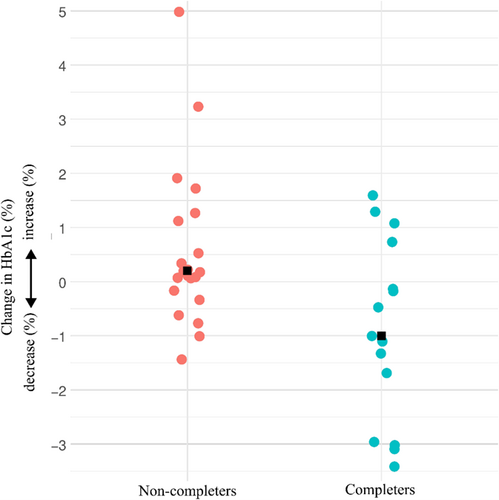Abstract: Effect of remote patient monitoring on subsequent three-month hemoglobin A1c (HbA1c) in youths and young adults with type 1 diabetes (T1D) with suboptimal glycemic outcomes
Claire Petty1; Britaney Spartz1; Erin M. Tallon1; Kelsey Panfil; Emily L1; Craig Vandervelden; Brent Lockee; Katie Noland; Mark Clements
Children's Mercy Kansas City; Kansas City, Missouri, USA
Background/Objective: Deterioration of glycemic management between diabetes clinic visits is common in youth and young adults (YYA) with T1D. Remote Patient Monitoring (RPM) is a telehealth intervention that offers patients additional one-on-one visits with healthcare providers between standard clinic visits, focusing on optimizing diabetes self-management. We investigated whether YYA with elevated HbA1c (≥9.0%) who participate in RPM, versus those who do not, experience improved HbA1c.
Methods: We retrospectively analyzed data from 36 YYA (36.1% female; 14.8 [12.7–15.8] years, median [IQR] age; 83.3% CGM users; 52.8% pump users) seen at a tertiary diabetes clinic (Midwest USA; 2020–2023). All patients had ≥2 elevated HbA1c results (≥9.0%) within 12 months and were offered RPM. Of these, 15 patients enrolled and completed at least one 15–20-min RPM visit; 21 patients did not. We evaluated change in HbA1c in those who did and did not complete an RPM visit (completers and non-completers, respectively) by comparing baseline HbA1c (the qualifying HbA1c [≥9.0%]) and HbA1c obtained 3 months after RPM was offered.
Results: HbA1c improved in 73.3% (11/15) of completers and 28.6% (6/21) of non-completers. In completers, median change in HbA1c was −1.0%; in non-completers, median change was +0.2% (Figure 1). In completers whose HbA1c improved, median change was −1.3%.
Conclusions: Completers experienced a substantial decrease in median HbA1c. By facilitating proactive diabetes management, RPM for YYA with elevated HbA1c (≥9.0%) may lead to significant improvements in glycemic management. Future research with larger matched patient cohorts is warranted, to enable rigorous evaluation of intervention efficacy and ideal dose.
Keywords: Hemoglobin A1c, Glycosylated; Remote Consultation; Telehealth; Type 1 Diabetes Mellitus; Youth

